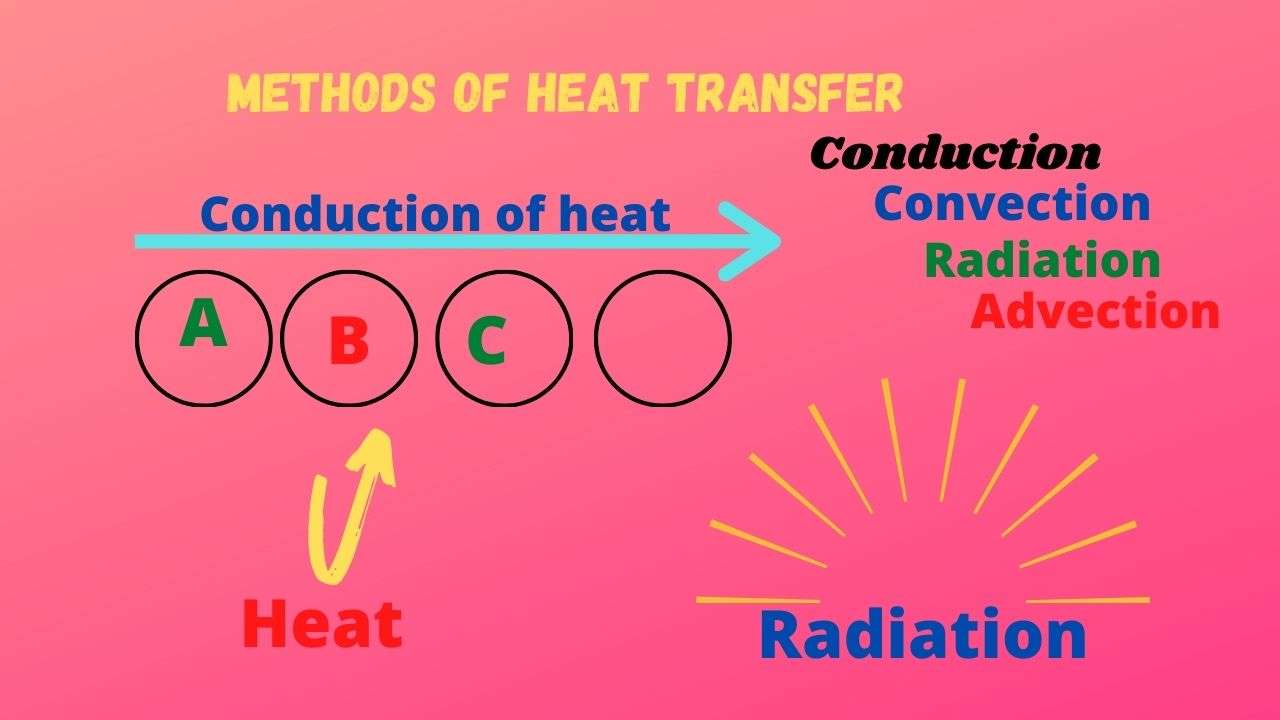Types of Methods of Heat Transfer: Heat is a form of energy that produces in us the sensation of hotness or coldness. Heat flows from the high-temperature side to the low-temperature side irrespective of the amounts of heat possessed by the bodies in contact.

Heat can be transferred from one place to another by four different methods of heat transfer. There are:
- Conduction
- Convection
- Radiation
- Advection
Thermal Convection
It is a process in which heat is transmitted from one part of a body to another at a lower temperature through molecular collisions, without the actual flow of matter.

In solids, heat travels by conduction. It means that it follows the ‘pass it on’ way the particles where heat energy is passed from one medium to another till all have the same amount of heat.
Convection
Convection is the process by which heat flows from the region of higher temperature to the region of lower temperature by the actual movement of the particles of matter.
In liquids and gases, heat travels by convection. Each particle comes to take the heat, becomes lighter, and moves up. The colder ones keep on moving down, get heated, and move up.
Types of Convection
There are two types of convection:
- Natural convection
- Forced convection
Natural convection
If the material moves due to the difference in density, the process of heat transfer is known as natural convection. Natural convection is also known as free convection.
Forced convection
If the heated material is forced to move by an agency such as a pump or a blower, the process of heat transfer is known as forced convection.
Radiation
Radiation is the process by which heat is transmitted from one place to another without leaving the intervening medium. It occurs in objects that emit electromagnetic radiation. No medium is required for the heat to travel.
Advection: Horizontally heat transfer by advection method.
Formation of Sea Breeze and Land Breeze
During Day Time, the land gets hotter than the water in the sea. So, air on land gets heated by convection and moves up. This place is then occupied by the cold air from the sea. This way a cycle of air movement starts known as a land breeze.
During the night, the land gets cooler faster than the water in the sea. So, the air touches the sea gets hotter, moves up and air from land moves towards sea generating a sea breeze.
Frequently Asked Questions (FAQ)
- What is thermal radiation?
Answer: The electromagnetic radiation emitted by a body by its temperature is known as thermal radiation. It is also called radiant energy.
- How do woolen clothes give us warmth?
Answer: Wool is a bad conductor of electricity. It doesn’t allow body heat to escape. Air trapped in wool fibers also acts as an insulator. Two thin blankets joined together are warmer than one thick blanket as the air between the two thin blankets also provides insulation.
- Explain Newton’s law of cooling.
Answer: The states that the rate of cooling or rate of loss of heat of a body is directly proportional to the temperature difference between the body and its surroundings, provided the temperature difference is small.
- What is heat transfer?
Answer: There are two bodies, one hot and another cold, heat generally moves from the hot body to the cold body till both are at the same temperature
Important physics topics link
